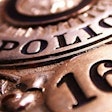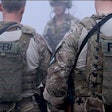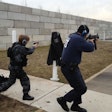My Aug. 5 column chronicled the controversy currently underway in Lima, Ohio. During a January drug raid, a white Lima PD SWAT sergeant, reportedy believing he was being fired upon, mistakenly shot and killed a 26-year-old biracial woman and wounded her baby. She was holding the baby at the time of the shooting.
As a result, the Lima PD found itself embroiled in racial controversy and besieged by protests, demonstrations, and probing media coverage. The sergeant was charged with negligent homicide and assault. Two weeks ago, an all-white jury acquitted him of the charges.
The following day, the victims’ mother/grandmother filed a federal lawsuit. Then the U.S. Department of Justice Civil Rights Division announced it would conduct a review of the case for possible federal civil rights violations.
Lima has become a city filled with tension and its citizens are protesting against the police. In this environment, Lima PD officers must go about their duties, hoping against hope, they won’t be involved in anything that even hints of controversy.
Those of us who have experienced similar situations understand what they’re going through.
Hopefully, cooler heads and the legal system will prevail, tensions will ease, and life will return to normal again. Until that happens, Lima will remain a divided, tension-filled city.
It’s not just American police departments that have to deal with the fallout from controversial police shootings.
Eleven days ago, three Montreal officers attempting an arrest in a park located in the city’s North End were surrounded by a crowd of 20 persons. When some of the crowd charged the officers, one officer opened fire, killing an 18-year-old man and wounding two others.
Montreal’s North End is home to numerous recent immigrants, including many Haitians. Tensions between some in the North End and police have been running high for some time. And this year alone, Montreal has been the scene of a number of other violent acts aimed at police.
On March 14, six police cruisers were torched; on May 21 another police cruiser was burned; and also in May, unknown an person(s) shot at police. There was also a major riot on April 21 by “jubilant” hockey fans celebrating victory in a playoff series. The rioters damaged or burned 16 police cars, smashed windows, looted 10 businesses, and started numerous fights. The mayhem injured one Montreal officer, led to 23 arrests, and forced police to use pepper spray and batons to restore calm.
On August 10, the day after the North End shooting, a peaceful protest march became violent and turned into a full-fledged riot. Montreal police and firefighters found themselves bombarded with thrown beer bottles and fending off physical attacks. As hundreds of riot police reinforcements poured into the area, the chaos escalated. No doubt, the Montreal Tactical Intervention Group (SWAT) was out there in force.
Numerous fires were set in streets and intersections. Rioters threw garbage cans and Molotov cocktails and set off propane tanks that erupted in spectacular fireballs.
Public safety personnel took the brunt of the attacks. An ambulance driver was injured by a thrown Molotov cocktail. And a police officer was shot in the leg, as gunfire forced police to duck for cover when they attempted to disperse the rioters. Two other officers were injured.
Property damage was extensive. A number of vehicles (parked outside of a fire station) were torched. At least 20 businesses were damaged and looted, numerous windows were smashed, and three fire trucks were vandalized.
Eventually, Montreal police were able to quell the unrest and the North End streets returned to calm after several hours. In the aftermath, the city’s police chief announced that Quebec Provincial Police will conduct an outside investigation of the shooting. And both the mayor and the chief called for renewed efforts to improve police-community relations.
Some observers have noted similarities between the North End riot and riots in France two years ago.
Montreal has now had two major riots during the past four months, and you can imagine the fragile “walking on egg shells” environment that the local cops now work in, especially in the volatile North End.
Montreal officials—like their counterparts in Lima—hope that calmer heads and the legal system will prevail and calm will replace the current high tensions between the residents of the North End and police. Until then, the people of Montreal are living in fear that another spark will set off further rioting.
Anyone who thinks the potential for urban riots went away after the tumultuous 1960’s is mistaken. The 2001 Cincinnati riot was sparked by a controversial police shooting. And the deadliest urban riot in modern U.S. history happened in Los Angeles 16 years ago after the acquittals of four LAPD officers who were involved in the infamous Rodney King incident.
Despite the many advancements and improvements in police riot response, major riots remain among the most devastating and dangerous events any city and its police force can face. When it comes to riots, it’s far better to prevent them than to cure them. However, that’s not always possible, and the reality is police must always be prepared and capable of controlling riots with rapid, effective police response.
What does all this mean for SWAT? By design, SWAT will almost always spearhead police riot response, tackling the most dangerous riot threats, which increasingly means gunfire directed at police. This means SWAT needs to maintain its counter-riot response strategy and tactics at a razor-sharp level, at all times. If your team isn’t up to this task, then your job is to get your team up to speed and keep them there.












